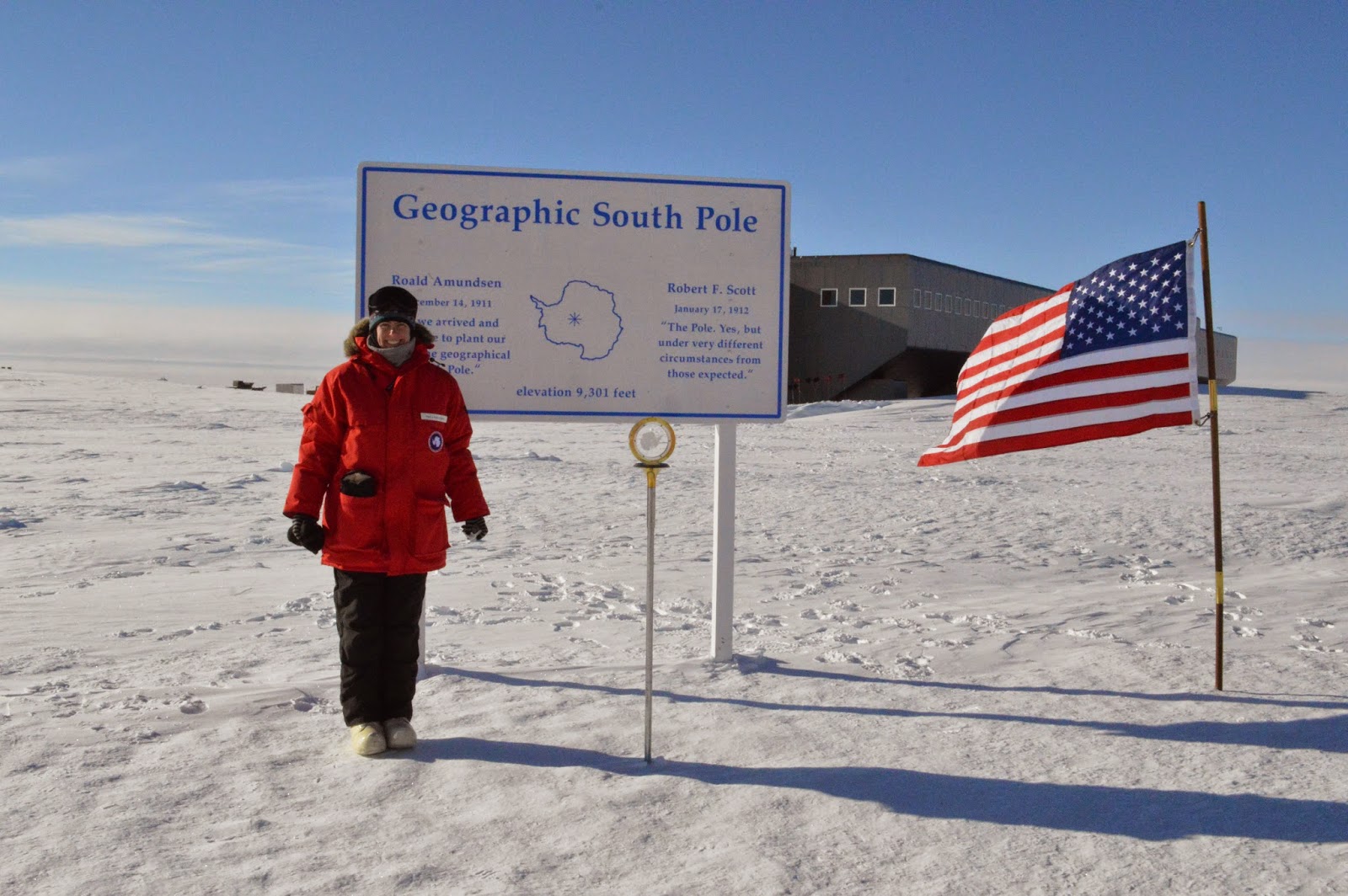 |
| Amudsen-Scott South Pole Station |
 |
| Antarctica Up Close |
Pole 1. The Geographic South Pole - This is the point where the earth's rotational axis intersects with the surface. In other words, this and the North Pole are the two stationary points that the rest of the planet pivots around. This is also were all longitudinal lines converge into a single point and is 90 degrees south latitude. From this advantage point, a person is always looking towards the north.
The ice sheet covering the pole is not static, rather this ice plateau that is over 9,000 feet thick shifts 30 feet each year. This slow, but steady movement means the pole marker must be shifted each year to accurately account for the change. While people in other parts of the world are watching the ball drop on New Year's Eve, those at the South Pole Station celebrate with the pole relocation ceremony.
The Geographic South Pole was the elusive white whale for early explorers. Amundsen and his team ultimately won the race as the first people to stand over this iconic location. Scott and his ill-fated team arrived a month later only to find that their dreams of being first had been usurped.
Pole 2. South Magnetic Pole - The earth is surrounded by a magnetic field called the magnetosphere. The magnetosphere limits the amount of ionically charged particles that are able to reach the surface. Due to the magnetosphere, the majority of charged debris bombarding our planet is funneled towards the North and South Pole. The path of ions streaking towards the ground create the luminescent Northern and (still existent, but less frequently experienced by humans) Southern Lights. By definition, the South Magnetic Pole is where these magnetic field lines orient perpendicularly to the earth's surface. The magnetic pole wanders quite a bit over time and rarely coincides with the actual Geographic South Pole. Currently the magnetic pole is found off the coast of Antarctica almost 3,000 kilometers from the Geographic South Pole.
Pole 3. South Geomagnetic Pole - I know what you are thinking this is a typo she just talked about the magnetosphere and it's polar ends. The difference between the geomagnetic and magnetic pole is subtle. The need for these two different definitions results from the fact that the magnetosphere does not in fact follow a perfect dipole linear model, rather it is slightly deformed. If you were to imagine the magnetosphere as a large bar magnet stretching through the planet, then the geomagnetic pole is the point where this super massive magnet would intersect with surface. Currently the South Magnetic Pole is located near the Russian operated Vostok Station.
Pole 4. The Ceremonial South Pole - This is the quintessential barber shop pole with a semi-circle of flags representing the twelve signatory states on the Antarctic Treaty. This iconic marker provides a splash of color and begs to be photographed set against the stark, barren, white background. This is the sight of the Antarctica Up Close shot with me looking back at my reflection in the highly polished metallic pole topper.
 |
| Antarctica Up Close Answer - Ceremonial South Pole |
The pole I danced around . . . Geographic South Pole of course. I ran around the world (or at least 360 longitudinal degrees) in a matter of seconds. Pretty impressive considering the altitude.


No comments:
Post a Comment